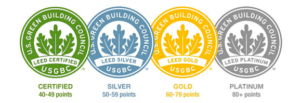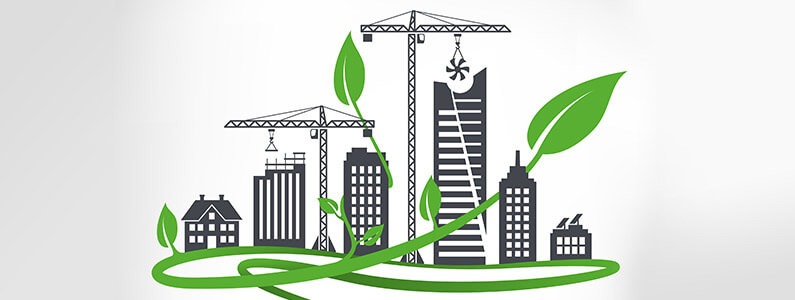LEED 101
According to the United States Green Building Committee (USGBC), buildings in the U.S. account for thirty-eight percent of CO₂ emissions and seventy-three percent of U.S energy consumption. In the age of climate activism, developers and contractors continuously seek ways to build greener buildings. Additionally, green building corporations offer investors the opportunity to receive tax breaks for green buildings.The USGBC was founded in 1993 to encourage sustainable practices amongst the building industry. In 1998 Leadership in Energy and Environmental Design, known as LEED, developed out of USGBC.
The USGBC website defines LEED as “a third-party green building certification program and the globally recognized standard for the design, construction and operation of high-performance green buildings and neighborhoods.” Therefore, LEED is an independent certification process that works with contractors and developers to create environmentally sustainable buildings.
LEED offers four levels of certification: Certified, Silver, Gold, and Platinum. Certification is achieved through a point system. To be certified a building must acquire forty to forty-nine points, for silver, fifty to fifty-nine, for gold, sixty to seventy-nine, and for platinum, a building must have eighty or more points.

The certification point system is based on prerequisites and credits. Prerequisites are the necessary standards to be considered for LEED certification and the credits are bonus components kind of like optional points.
The rating system varies among the four categories of building and construction. The four are LEED BD+C, or LEED building design and construction, LEED ID+C, or LEED interior design and construction, LEED O+M, or LEED building operations and maintenance, and LEED ND, or LEED for neighborhood design.
LEED certificates usually run between four and five figures–according to a CityLab article, that is a low price for a large building project. Additionally, LEED buildings receive tax deductions for their environmental benefits such as lower energy consumption and reduced carbon emissions.
LEED in the Building Ecosystem
The foundational motto of LEED is to reward investors for reducing their environmental degradation at every turn of the building process, from using paints with low VOCs (volatile organic compounds) or bamboo flooring to solar panel installation.The USGBC states, “by promoting a whole-building approach to sustainability, LEED recognizes performance in location and planning, sustainable site development, water savings, energy efficiency, materials selection, waste reduction, indoor environmental quality, innovative strategies and attention to priority regional issues.”
However, in recent years, LEED certification has come under fire. LEED certification is sought after for its tax credits, ability to attract tenants, and the ability to charge premium rental rates. However, certification is granted to the building during the construction process without much consideration for the building to maintain LEED standards. Therefore, investors benefit from acquiring the LEED certification without keeping LEED standards.
Furthermore, the point system is not well balanced. Some buildings achieve certification by focusing on green amenities rather than energy efficiency. A New York Times article from 2009 wrote, “some experts have contended that the seal should be withheld until a building proves itself energy efficient, which is the cornerstone of what makes a building green.”
The loopholes in the system existed because there was previously no requirement for buildings to report their energy findings. As of 2009 buildings must record and report energy use information. The certificate can be rescinded if the building does not meet standards.
The LEED certification process is always innovating and improving its commitment to sustainable buildings and energy efficiency. LEED has also lifted the veil on the building industry and its effects on climate change. LEED may be to thank for building sustainability awareness, but can it keep up?
Written by Mollie Wodenshek for Future Air.
Resources:
Anonymous, “Green Building 101: What is LEED”, USGBC.
Barth, Brian, “Is LEED Tough Enough for Climate Change Era?”, CITYLAB.
Navarro, Mireya, “Some Buildings Not Living Up to Green Label”, New York Times.
“This is LEED”, LEED, USGBC, http://leed.usgbc.org/leed.html.
Photo:
Mar-Flex

